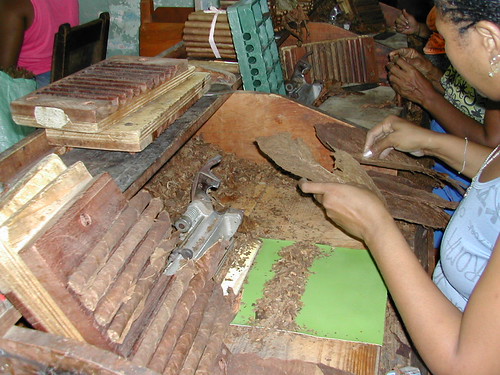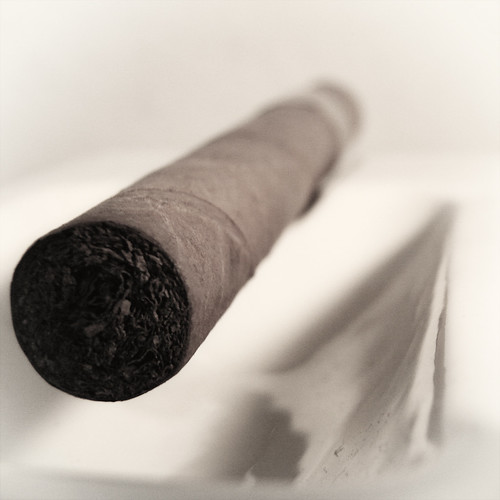
In one sense cigars are like sponges in that they absorb
what is in their environment. If they are
stored in less than optimal conditions they could easily go bad. Even the most expensive cigar could end up
being a disappointing smoke. However, if
you store your cigars in the proper environment not only will they maintain
their quality, you will actually help them to age.
Most non-cigar smokers are not aware that keeping cigars in
a humidor goes well beyond protecting them from the environment. When stored in a humidor each of your cigars
has the potential to become a “perfect smoke”.
Therefore, whether you are an ardent cigar aficionado or a beginning
cigar smoker you should store and age your cigars in a good cigar humidor.
Prior to being rolled, most cigar tobacco has been
processed, cured, fermented and aged for at least two years after the tobacco
has been harvested. At that point in
time the cigars are ready to be constructed.
The tobacco is rolled and then the finished cigars are usually aged
before being offered to the public. However,
some finished cigars, especially lower-priced bundles, are not aged any
additional length of time.
Most cigars will continue to improve for up to a decade if
they are aged in a properly maintained humidor.
After that time they will still need proper storage but they won’t show
any significant improvement.
The reality is that most of us won’t want to wait ten years
before enjoying our cigars. Experiments
were conducted to see how much aging affected the quality of different
cigars. Although every bundle or box of
cigars will age differently most of the results were pretty consistent. Here is a summary of how the findings can
affect the quality of your cigars:
·
If you age most cigars for a minimum of two to
three months before smoking them you will recognize a considerable improvement
in the taste.
·
Some cigars may attain their full flavor
potential in as little as six months of being aged in a humidor.
·
If you age your cigars for at least a year they
will become significantly mellower.
·
You can’t transform a bad cigar or a bad brand
of cigars into good cigars by aging them.
However, if you’ve bought good cigars that taste bad you can
dramatically improve their taste by aging them.
·
You will need to age inexpensive cigars longer
than you need to age premium cigars to achieve noticeable improvements.
·
Full bodied cigars tend to improve and mellow
more with longer aging than do mild cigars.
·
All cigars age differently and will taste
different from each other (even cigars from the same bundle or box).
·
If you buy your cigars from local tobacconists
who keep their cigars in a humidor it is likely that they’re ready to smoke
immediately (or will require less aging) than cigars that you buy via mail
order or online.
·
Artificially flavored cigars don’t need to be
aged but they still need to be stored in a humidor. However, you should never keep artificially
flavored cigars with other cigars in the same humidor.
Before aging your cigars you will need to take them out of
their wrappers or tubes. However, artificially
flavored cigars should be kept in their sealed tubes.
Beginning cigar smokers sometimes balk at the thought of
investing in a humidor. Aging aside,
even if you could prevent only a handful of premium cigars from going bad it
should justify the cost of a small humidor.
Author Bio –
Jason Daniels is an avid cigar smoker.
Because it’s not always possible to find a place to smoke his favorite
cigars, Jason always carries e-cigs
in his pocket so that he can enjoy a satisfying “smoke” wherever he is.





